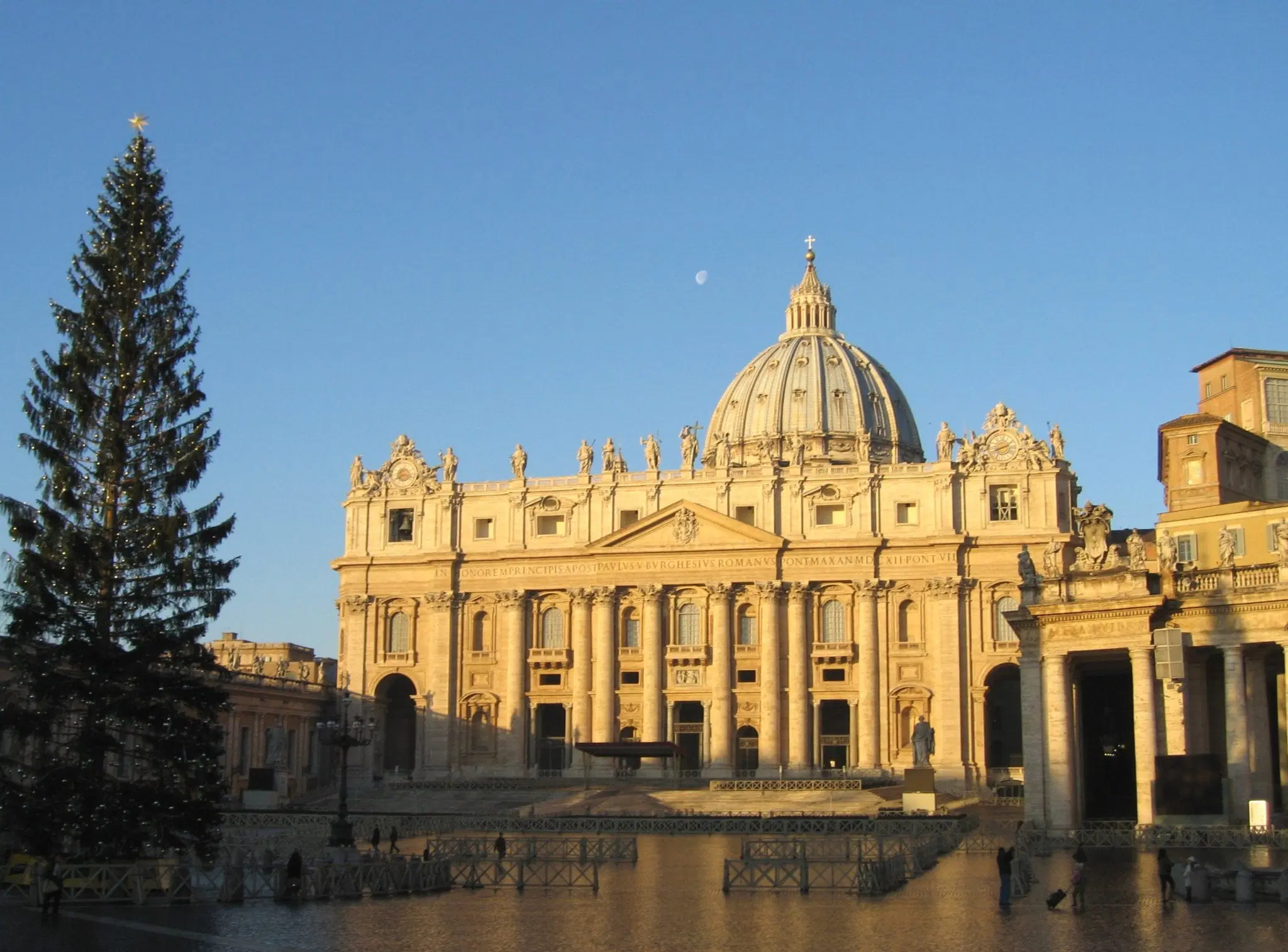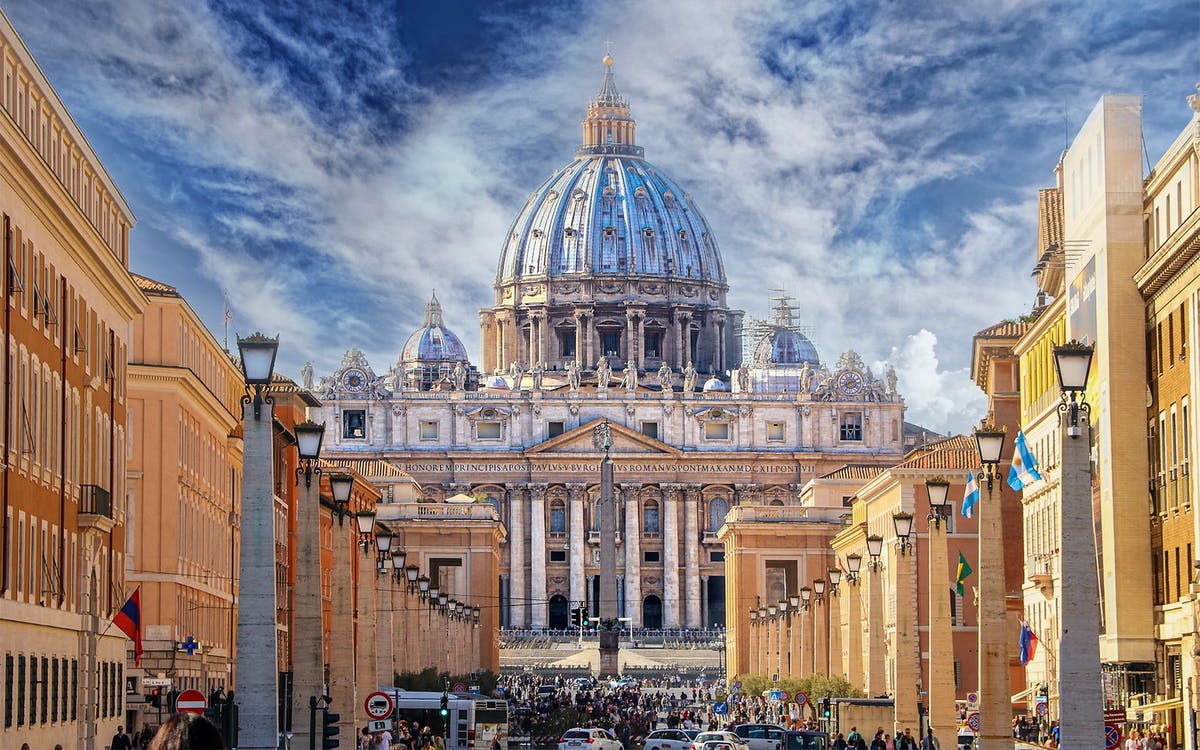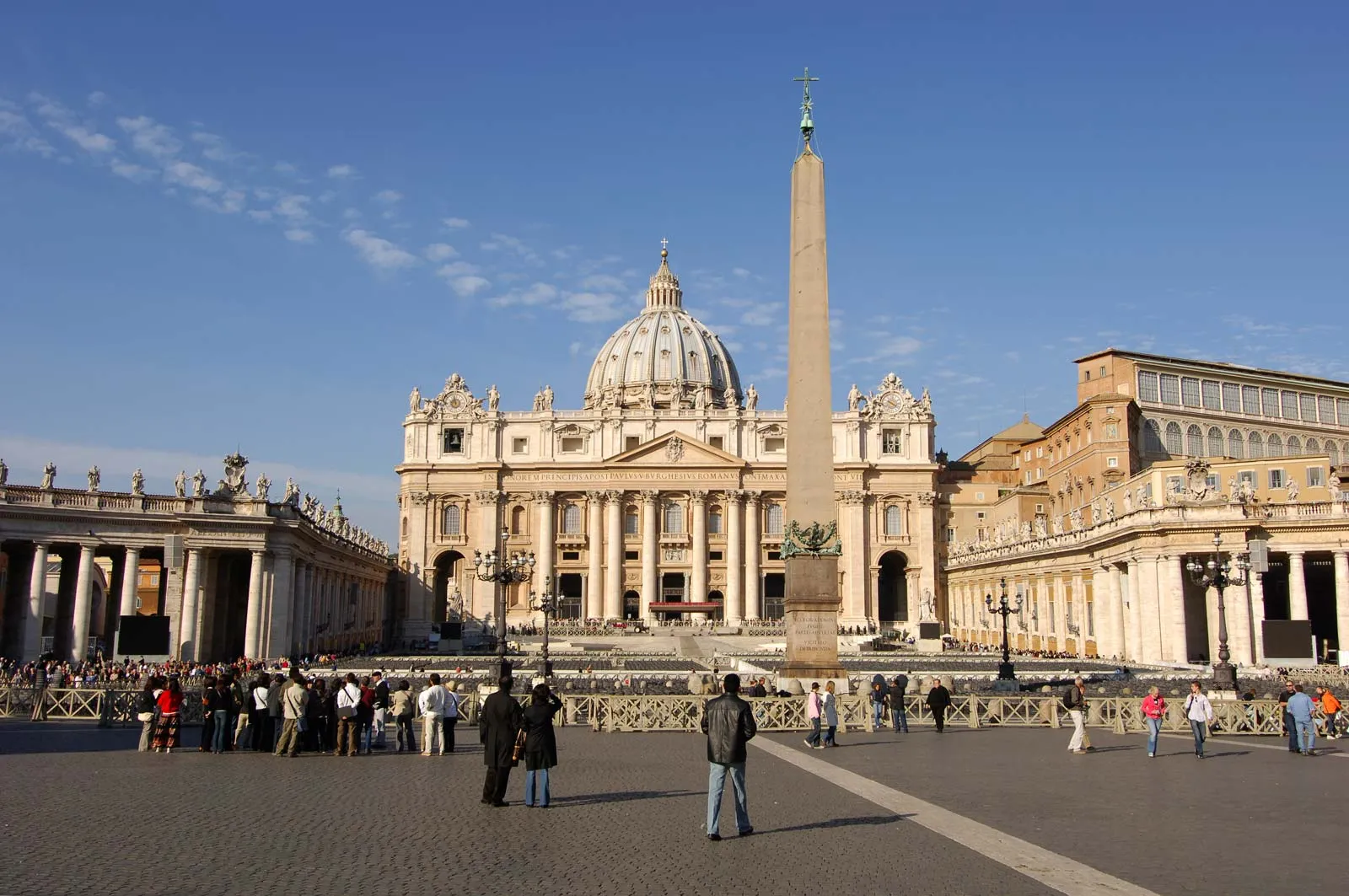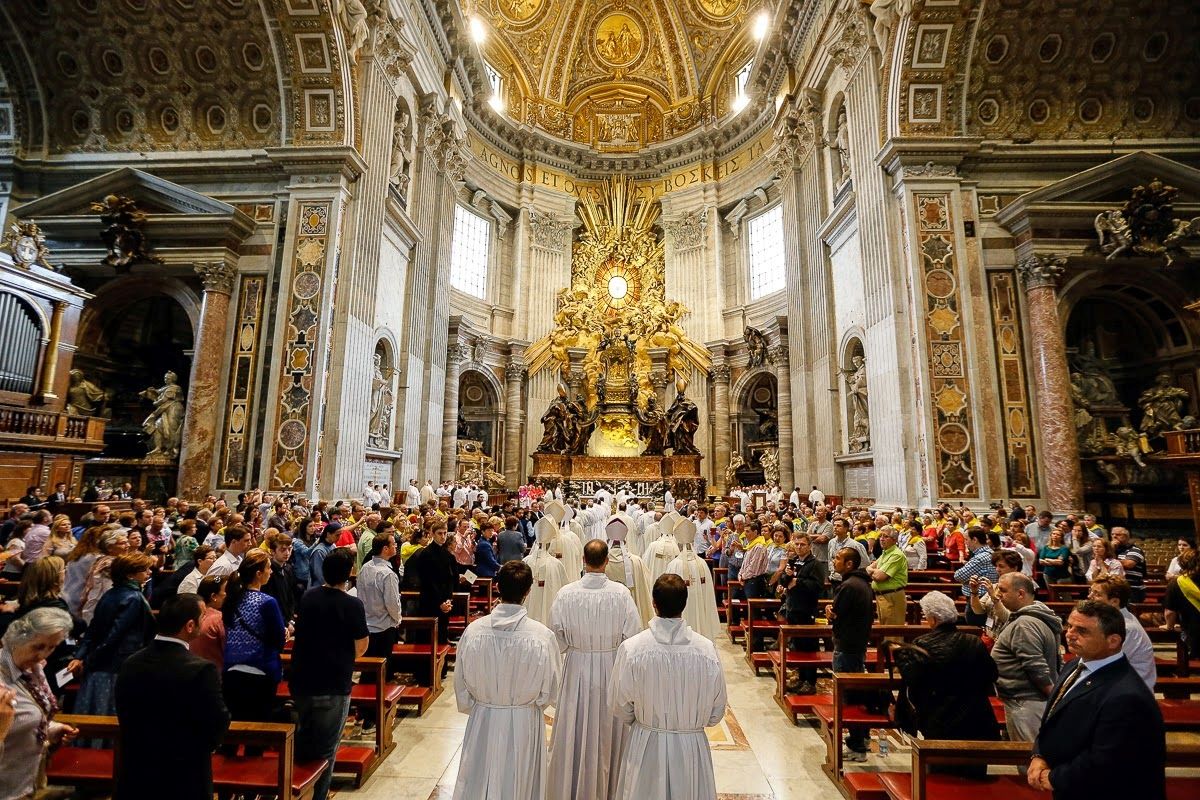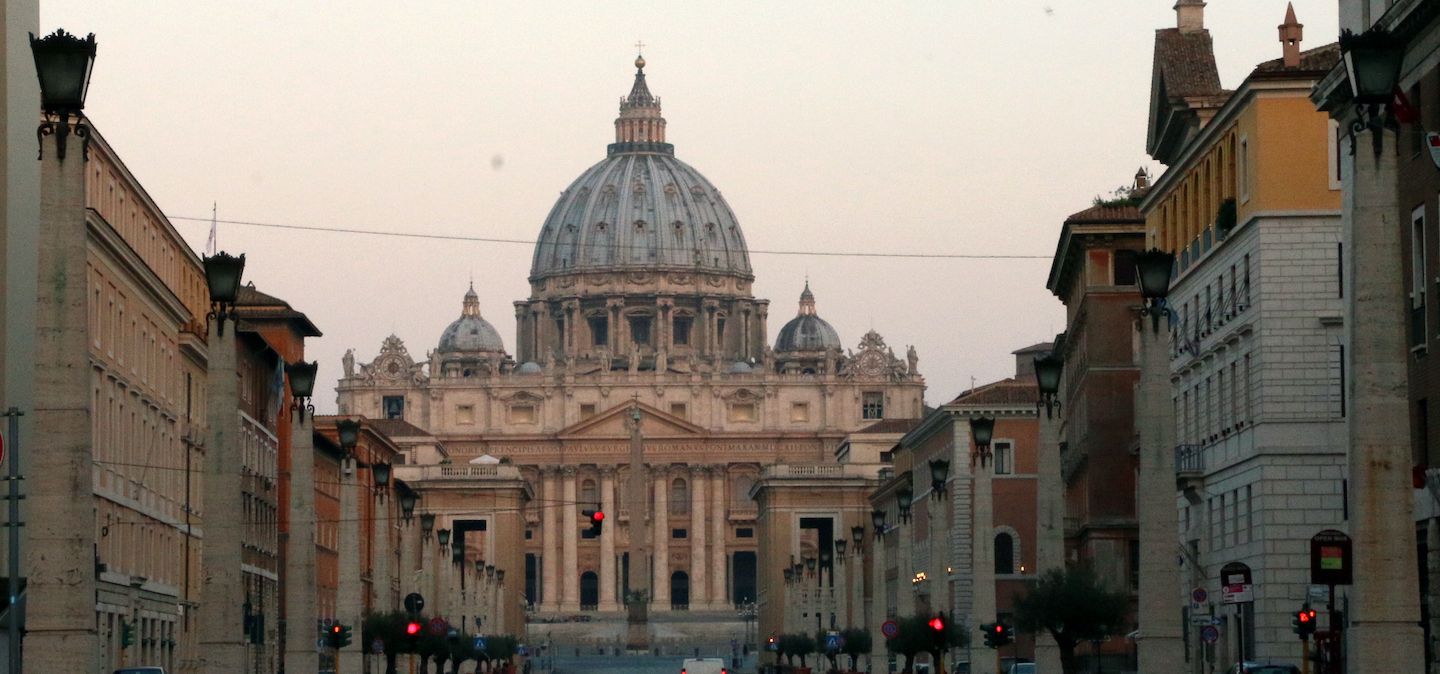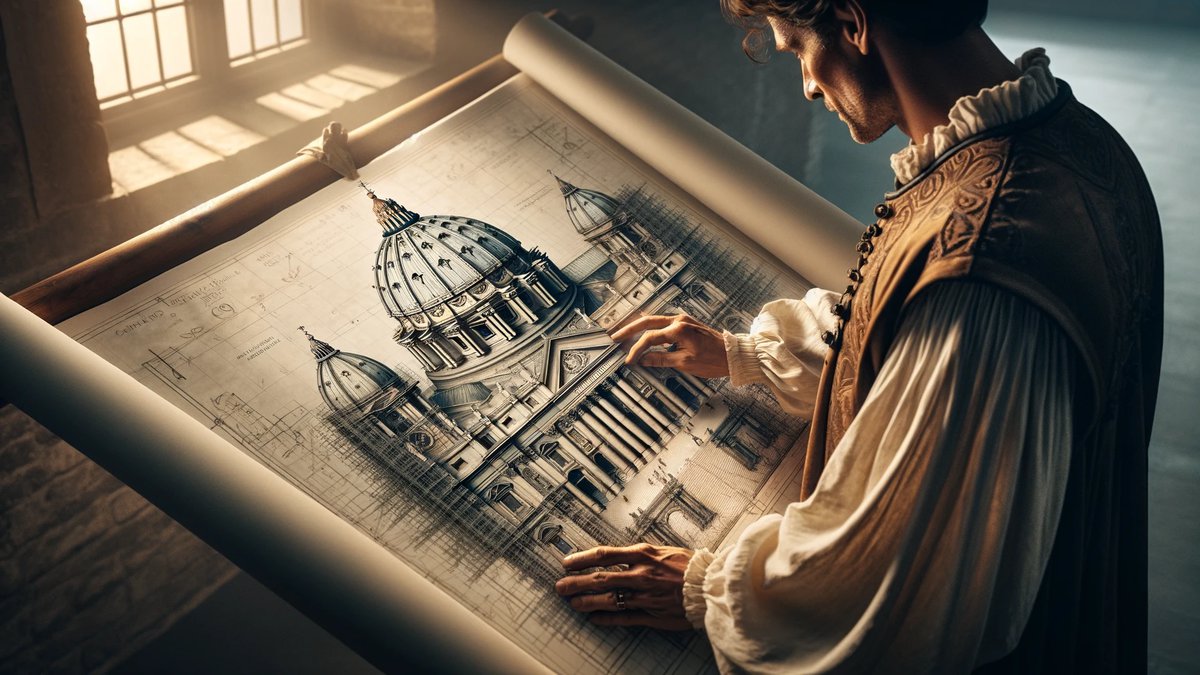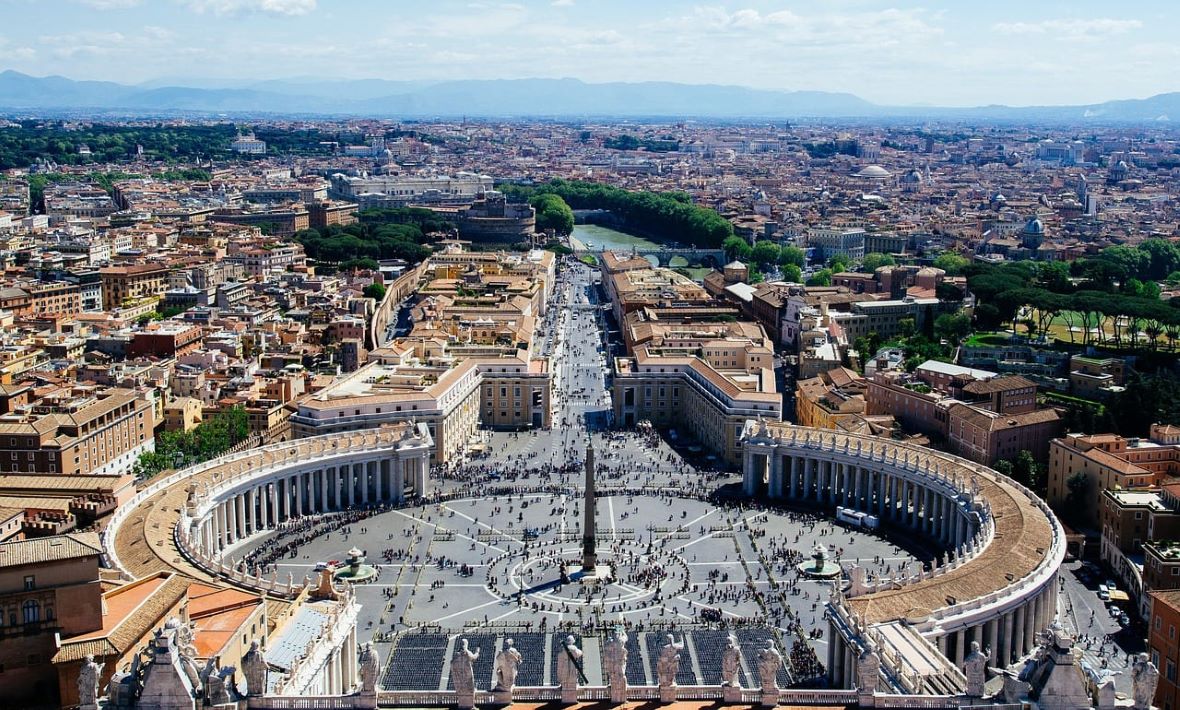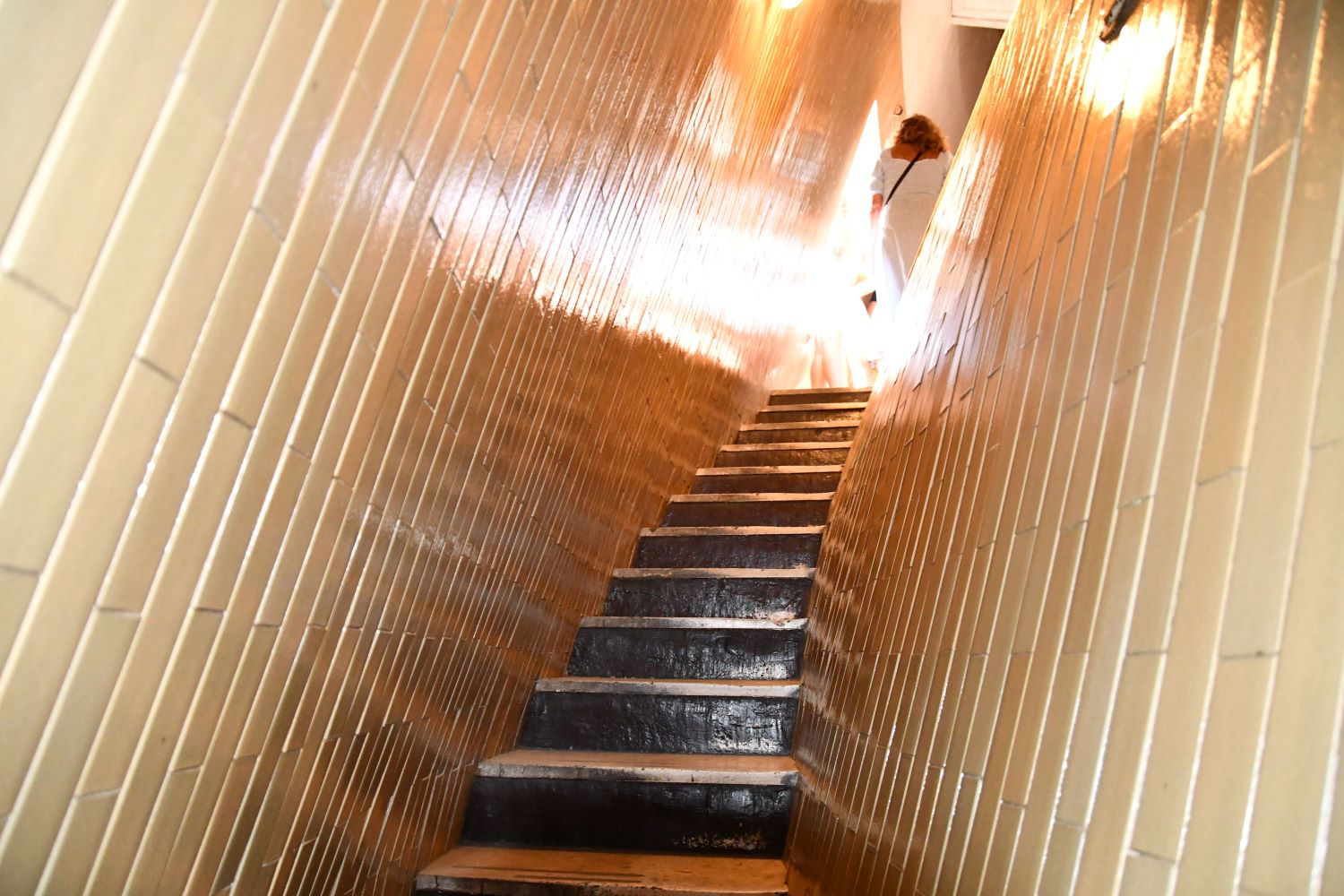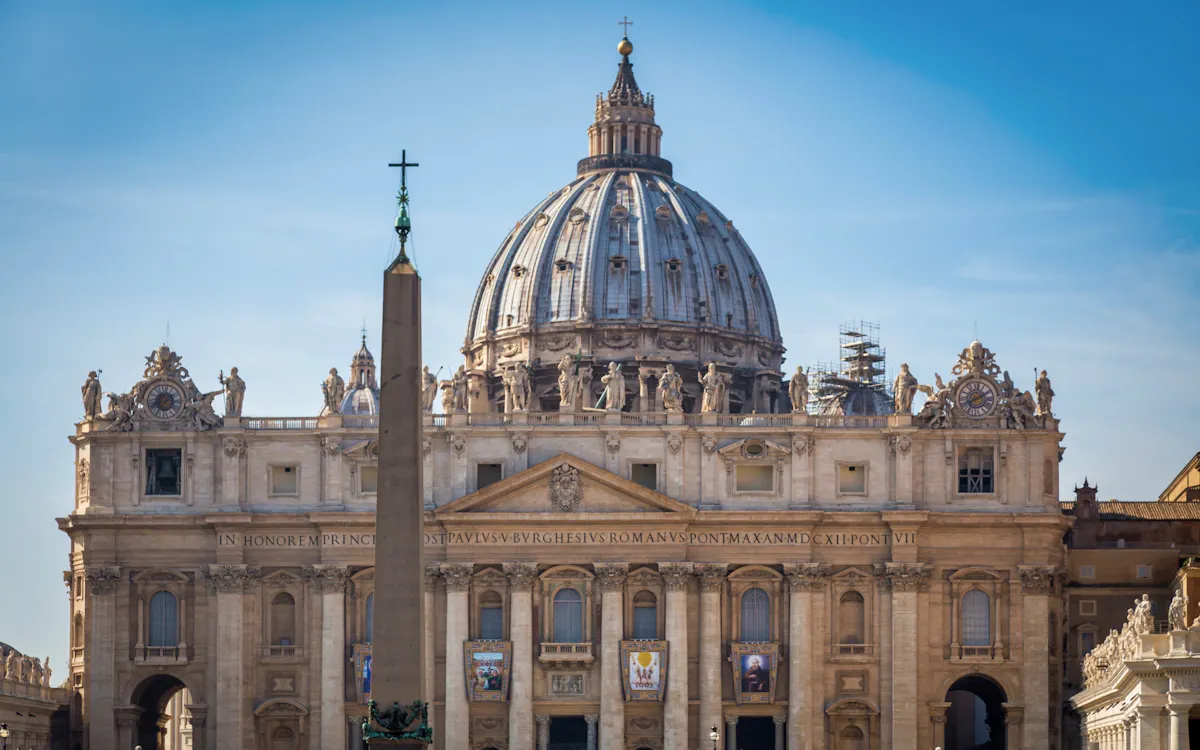Home>Arts and Culture>Who Designed St. Peter’s Basilica
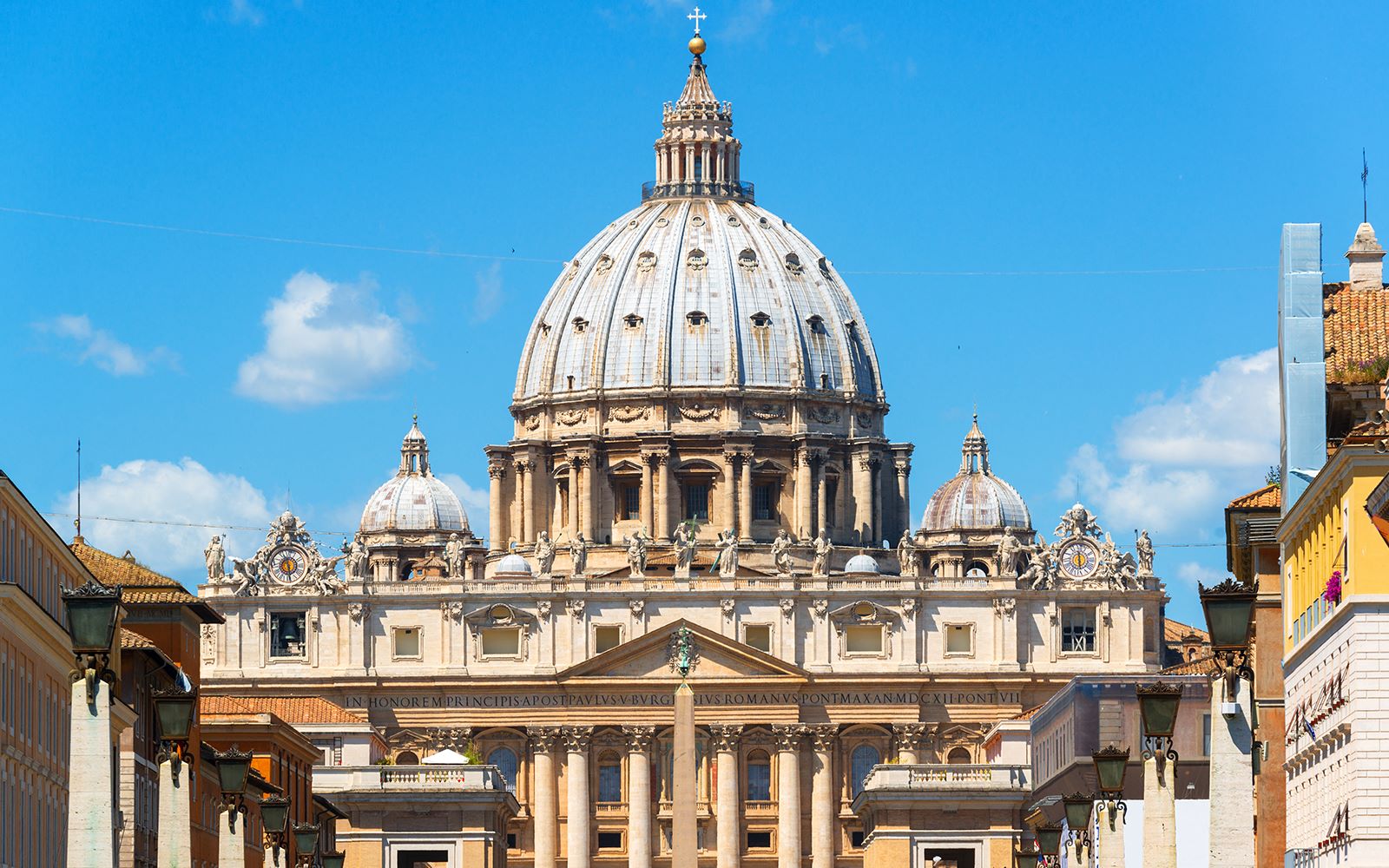

Arts and Culture
Who Designed St. Peter’s Basilica
Published: February 10, 2024
Ericka Andersen, an editor at Christian.net, expertly merges digital strategy with content creation, focusing on faith and societal issues. Her communication skills enhance the platform's engaging narratives, fostering meaningful dialogue on belief's impact on society.
Discover the mastermind behind St. Peter's Basilica and delve into the rich history of this architectural marvel. Uncover the artistic legacy of this iconic symbol of arts and culture.
(Many of the links in this article redirect to a specific reviewed product. Your purchase of these products through affiliate links helps to generate commission for Christian.net, at no extra cost. Learn more)
Table of Contents
Introduction
St. Peter's Basilica, a majestic architectural marvel nestled in the heart of Vatican City, stands as a testament to human ingenuity and artistic brilliance. This iconic structure, revered as the largest church in the world, is not only a place of worship but also a symbol of cultural and historical significance. The story of its design is a captivating journey through the minds of several visionary architects and artists who left an indelible mark on its creation.
As we delve into the history of St. Peter's Basilica, we will unravel the intricate tapestry of creativity, innovation, and unwavering dedication that shaped its evolution. From the early designs that laid the foundation for its grandeur to the pivotal contributions of renowned figures such as Bramante, Michelangelo, Raphael, and Carlo Maderno, each chapter of this narrative unveils a compelling tale of artistic prowess and architectural brilliance.
Join us on this enlightening exploration as we uncover the captivating saga of St. Peter's Basilica's design, delving into the visionary minds and creative endeavors that culminated in the creation of this awe-inspiring architectural masterpiece.
Read more: Who Built St. Peter’s Basilica
The Early Designs of St. Peter's Basilica
The early designs of St. Peter's Basilica trace back to the 4th century when Emperor Constantine laid the foundation for the original basilica. Over the centuries, the structure underwent several transformations, reflecting the evolving architectural styles and the influence of different artistic movements.
The first significant redesign of the basilica took place during the Renaissance era, a period characterized by a renewed interest in classical art and architecture. In 1506, Pope Julius II commissioned renowned architect Donato Bramante to create a new plan for the basilica, envisioning a monumental structure that would surpass its predecessors in grandeur and magnificence.
Bramante's design aimed to capture the essence of classical Roman architecture while infusing it with innovative elements that would define the emerging Renaissance style. His vision centered on a Greek cross plan, featuring a central dome that would soar to breathtaking heights, symbolizing the divine connection between heaven and earth.
Bramante's untimely death in 1514 led to a succession of architects, each leaving their mark on the basilica's design. The subsequent involvement of celebrated artists and architects such as Michelangelo and Raphael further enriched the evolving blueprint, infusing it with their distinctive artistic sensibilities and technical expertise.
The early designs of St. Peter's Basilica serve as a testament to the enduring legacy of Renaissance architecture, encapsulating the spirit of innovation and artistic excellence that defined this transformative period in history. These foundational designs laid the groundwork for the awe-inspiring structure that continues to inspire awe and reverence in the modern era, standing as a timeless testament to human creativity and architectural brilliance.
The Role of Bramante
The pivotal role of Donato Bramante in shaping the design of St. Peter's Basilica reverberates through the annals of architectural history, casting a profound influence on the evolution of Renaissance architecture. Bramante, a visionary architect of the High Renaissance, was entrusted with the monumental task of reimagining the basilica, infusing it with a sense of grandeur and magnificence befitting its status as the spiritual heart of Christianity.
Bramante's design for St. Peter's Basilica was characterized by a bold departure from traditional architectural conventions, embracing the principles of classical Roman architecture while imbuing it with a newfound sense of harmony and proportion. At the core of his vision lay the concept of a Greek cross plan, a departure from the traditional Latin cross plan, symbolizing a radical departure from the architectural norms of the time.
The Greek cross plan, with its equal arms extending in four directions, embodied a sense of balance and symmetry, culminating in a central space that exuded a transcendent aura. At the heart of this design lay the majestic dome, a crowning achievement that would come to define the architectural identity of St. Peter's Basilica. Bramante's vision for the dome, inspired by the Pantheon in Rome, sought to elevate the basilica to unprecedented heights, both literally and metaphorically.
In addition to the structural innovations, Bramante's design incorporated a series of interconnected spaces, including chapels, galleries, and courtyards, creating a seamless flow that invited worshippers into a realm of divine splendor. The integration of light and space, a hallmark of Renaissance architecture, imbued the basilica with a sense of ethereal luminosity, elevating the spiritual experience of those who crossed its threshold.
Bramante's untimely passing in 1514 meant that he did not witness the completion of his grand vision for St. Peter's Basilica. However, his enduring legacy endures in the foundational elements of the basilica's design, serving as a testament to his unparalleled vision and innovative spirit. The influence of Bramante's design reverberates through the soaring arches, the harmonious proportions, and the timeless elegance that define St. Peter's Basilica, immortalizing his contribution to the architectural heritage of humanity.
As we reflect on the role of Bramante in shaping the design of St. Peter's Basilica, we are reminded of the transformative power of visionary creativity and the enduring impact of architectural innovation. His legacy stands as a testament to the timeless pursuit of beauty, harmony, and spiritual transcendence, encapsulated within the hallowed walls of this architectural masterpiece.
Michelangelo's Contributions
Michelangelo Buonarroti, revered as one of the greatest artists of all time, left an indelible imprint on the design of St. Peter's Basilica, infusing it with his unparalleled artistic vision and technical prowess. Commissioned to continue the work on the basilica following Bramante's passing, Michelangelo embarked on a transformative journey that would redefine the architectural landscape of the structure.
At the heart of Michelangelo's contributions lay his ambitious reimagining of the basilica's central dome. Drawing inspiration from the architectural marvels of antiquity, particularly the Pantheon, Michelangelo envisioned a dome of monumental proportions that would stand as a testament to human ingenuity and divine grandeur. His design, characterized by a soaring dome with a majestic lantern crowning its apex, sought to elevate the basilica to unprecedented heights, both literally and metaphorically.
Michelangelo's meticulous attention to detail and his unwavering pursuit of perfection manifested in the structural elements of the dome, where he employed innovative techniques to ensure its stability and grandeur. His mastery of geometry and engineering enabled him to create a dome that defied the limitations of its time, embodying a sense of ethereal beauty and architectural splendor.
In addition to his work on the dome, Michelangelo made significant contributions to the architectural layout of the basilica, infusing it with a sense of unity and coherence. His emphasis on spatial harmony and the interplay of light and shadow imbued the interior spaces with a transcendent quality, inviting worshippers into a realm of spiritual contemplation and divine reverence.
Beyond his architectural endeavors, Michelangelo's artistic genius permeated the basilica's aesthetic identity, as evidenced by his iconic sculpture, the Pietà, which found its rightful place within the hallowed confines of St. Peter's. This masterpiece, depicting the sorrowful Virgin Mary cradling the lifeless body of Christ, epitomized Michelangelo's unparalleled skill in capturing the human form with a sense of emotional depth and spiritual poignancy.
Michelangelo's contributions to the design of St. Peter's Basilica stand as a testament to his enduring legacy as a visionary artist and architect. His transformative vision and technical innovations left an indelible mark on the architectural landscape of the basilica, shaping its identity as a timeless symbol of artistic excellence and spiritual transcendence.
As we contemplate Michelangelo's profound impact on the design of St. Peter's Basilica, we are reminded of the transformative power of artistic vision and the enduring legacy of creative genius, immortalized within the resplendent walls of this architectural masterpiece.
The Influence of Raphael
The influence of Raphael, a luminary of the Italian Renaissance, on the design of St. Peter's Basilica reverberates through the annals of art and architecture, leaving an indelible mark on the evolving blueprint of this iconic structure. Renowned for his mastery of composition, perspective, and harmonious aesthetics, Raphael's artistic sensibilities permeated the fabric of the basilica, infusing it with a sense of grace, balance, and timeless elegance.
Raphael's involvement in the design of St. Peter's Basilica unfolded against the backdrop of the High Renaissance, a period characterized by a fervent revival of classical art and a profound appreciation for the ideals of beauty and proportion. His artistic prowess and keen understanding of spatial dynamics played a pivotal role in shaping the interior layout of the basilica, creating a sense of visual continuity and ethereal luminosity that transcended the confines of traditional architectural norms.
One of Raphael's most significant contributions to the basilica's design was his conceptualization of the Chigi Chapel, a sacred enclave within the hallowed precincts of St. Peter's. The harmonious interplay of architectural elements, including the use of pilasters, arches, and a coffered ceiling, reflected Raphael's penchant for creating a seamless fusion of structural integrity and aesthetic splendor. The chapel, adorned with exquisite frescoes depicting scenes from the lives of Saints Lawrence and Stephen, epitomized Raphael's ability to imbue sacred spaces with a sense of divine grandeur and spiritual serenity.
Furthermore, Raphael's artistic vision extended to the embellishment of the basilica's interior, where he collaborated with a cadre of talented artisans to adorn the sacred edifice with exquisite tapestries and decorative elements. His meticulous attention to detail and his unwavering commitment to artistic excellence elevated the visual narrative of the basilica, transforming it into a veritable showcase of Renaissance artistry and timeless beauty.
Raphael's enduring influence on the design of St. Peter's Basilica transcends the realm of architecture, encapsulating the transformative power of artistic vision and the enduring legacy of creative genius. His ability to infuse sacred spaces with a sense of transcendent beauty and spiritual resonance resonates through the resplendent halls of the basilica, inviting visitors into a realm of divine splendor and artistic transcendence.
As we contemplate the profound influence of Raphael on the design of St. Peter's Basilica, we are reminded of the timeless allure of Renaissance art and the enduring legacy of artistic luminaries whose contributions continue to inspire and captivate generations, immortalized within the resplendent walls of this architectural masterpiece.
Read more: Why Is St. Peter’s Basilica Important
The Final Design by Carlo Maderno
Carlo Maderno, a distinguished architect of the Baroque era, played a pivotal role in shaping the final design of St. Peter's Basilica, leaving an indelible mark on its architectural legacy. Commissioned to oversee the completion of the basilica's construction, Maderno embarked on a transformative journey that would redefine its structural identity and aesthetic grandeur.
At the heart of Maderno's vision lay a profound reverence for the basilica's sacred significance, coupled with a commitment to infuse it with a sense of monumental splendor befitting its status as the preeminent seat of the Catholic Church. His design sought to harmonize the classical principles of Renaissance architecture with the ornate embellishments characteristic of the burgeoning Baroque style, creating a synthesis of timeless elegance and opulent grandeur.
One of the most striking elements of Maderno's design was the extension of the nave, resulting in a dramatic elongation of the basilica's central axis. This architectural intervention not only enhanced the basilica's visual impact but also imbued it with a sense of spatial grandeur, inviting worshippers into a realm of divine magnificence and spiritual transcendence. The elongated nave, adorned with majestic arches and soaring vaults, created a sense of awe-inspiring vastness, elevating the spiritual experience of those who traversed its hallowed expanse.
Maderno's meticulous attention to detail and his innovative approach to architectural composition manifested in the majestic façade of St. Peter's Basilica, a resplendent testament to the grandeur of Baroque architecture. The façade, adorned with a series of colossal columns, intricate sculptures, and ornate embellishments, exuded a sense of opulence and majesty, serving as a fitting prelude to the awe-inspiring splendor that awaited within the basilica's sacred precincts.
Furthermore, Maderno's design encompassed the completion of the basilica's iconic dome, a monumental undertaking that culminated in the crowning achievement of St. Peter's architectural ensemble. His meticulous attention to structural integrity and aesthetic harmony ensured that the dome stood as a triumphant symbol of human ingenuity and divine transcendence, soaring to breathtaking heights and casting a radiant silhouette against the Roman sky.
As we reflect on the final design by Carlo Maderno, we are reminded of the transformative power of architectural innovation and the enduring legacy of creative vision. His contributions to the architectural landscape of St. Peter's Basilica stand as a testament to the timeless pursuit of beauty, grandeur, and spiritual transcendence, immortalized within the resplendent walls of this architectural masterpiece.
Conclusion
The design of St. Peter's Basilica stands as a testament to the enduring legacy of human creativity and architectural brilliance. From its early Renaissance origins to the transformative interventions of visionary architects and artists, the basilica's evolution embodies a captivating saga of artistic innovation and spiritual transcendence.
The visionary designs of Donato Bramante laid the foundation for the basilica's grandeur, infusing it with the spirit of Renaissance artistry and architectural innovation. His bold departure from traditional conventions and his ambitious vision for the central dome set the stage for a monumental architectural endeavor that would captivate the world for centuries to come.
Michelangelo's contributions further elevated the basilica to unprecedented heights, both in terms of physical grandeur and artistic magnificence. His transformative vision for the dome and his meticulous attention to spatial harmony and aesthetic coherence imbued the basilica with a sense of divine splendor and transcendent beauty.
The influence of Raphael, with his mastery of composition and harmonious aesthetics, permeated the fabric of the basilica, infusing it with a timeless elegance and spiritual resonance. His ability to create sacred spaces that exuded a sense of divine grandeur and artistic transcendence left an indelible mark on the architectural narrative of St. Peter's.
Carlo Maderno's final design, characterized by a harmonious synthesis of Renaissance and Baroque elements, culminated in the majestic splendor that defines the basilica's architectural identity. His innovative interventions, including the elongation of the nave and the resplendent façade, elevated the basilica to a realm of unparalleled grandeur and opulence.
As we contemplate the collective contributions of these visionary architects and artists, we are reminded of the enduring legacy of St. Peter's Basilica as a timeless symbol of human ingenuity and spiritual transcendence. Its architectural splendor continues to inspire awe and reverence, inviting visitors into a realm of divine beauty and artistic excellence.
In conclusion, the design of St. Peter's Basilica stands as a testament to the transformative power of artistic vision and the enduring legacy of creative genius. Its resplendent halls bear witness to the timeless pursuit of beauty, harmony, and spiritual transcendence, immortalizing the indelible mark of human creativity within the hallowed confines of this architectural masterpiece.

